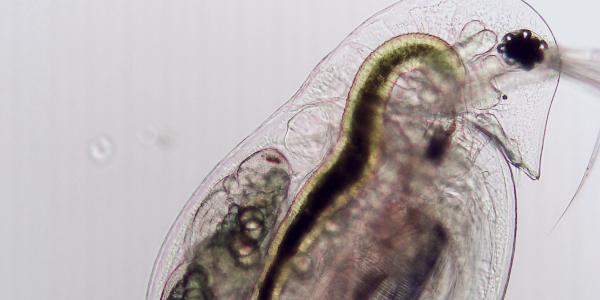The COVID-19 pandemic has changed many elements of people’s daily lives. One notable and visible change is the reduction of vehicle traffic in America’s cities. Last spring the air became cleaner, and once-busy streets became quiet and empty in a way that was only recently unimaginable. Some cities temporarily took urban streets back from cars, prioritizing pedestrians and bicycles.
What could this mean for the future of our cities and our transportation systems? CU Boulder Today spoke with Kevin J. Krizek, professor of transport in the programs of Environmental Design and Environmental Studies, to get some answers. He and his co-author, David King, assistant professor at Arizona State University, explain this unique window of opportunity in a paper published this week in Town Planning Review, one of the world’s oldest urban planning journals. (Responses edited for clarity).

Kevin Krizek. (Credit: Kevin Krizek)
First, let’s go back in time. When did streets become all about cars? Because at some point this wasn’t the case in America.
In the late 1920s, we saw a turn away from streets being a center for commerce and socialization and that was in large part traced to the advent of the automobile. When the automobile came out, there was just an extreme amount of chaos. Cars were mixing with horses and horse dung and bicycles.
In response, engineers and engineering planners birthed a new profession. And their purpose was really to execute the movement of vehicles. And it was around that time, in the first half of the 20th century, when expectations shifted in terms of the primary purpose of our streets.
Why are people looking for transit options other than cars these days?
Today, the amount of pedestrian and other kinds of deaths on urban streets in the U.S. is on the rise. It's been staggering. It's not getting better; it's getting worse. And many of these deaths are attributed to vehicular movement. And the vehicular movement, as we know, is traced to many other kinds of environmental and social problems, such as carbon emissions, air pollution and urban sprawl. So, despite all its wonderful glory and the fact that the automobile has been so commonly accepted as a staple of American culture, there is a movement that is starting to gain traction that is about looking for alternatives.
How has COVID-19 changed what’s happening on our urban streets this year?
Almost overnight the purpose of streets changed. In March 2020, what you saw were streets that were completely empty. I think this was to a certain extent an “aha moment” for many people, including the public and elected officials. They were thinking, “Wow, there's a lot of space in streets that is a valuable resource that we can better leverage to serve some of the current problems that are plaguing society.”
Seeing how streets can change their character, quickly, helped alter perceptions from the public and elected officials about their role in society. A window of political acceptability was shifted, what some political economists call an Overton Window, which can be a first step in seeding major policy reform. In this case, we saw that streets’ past and predominant character is not set in stone.
What has the pandemic helped us realize?
In addition to showing how streets—which are the workhorse of our transportation system and how we get around—are valuable public assets that can change, COVID helped open our eyes to other important transport issues.
The second realization is that cities can quickly implement strategies and measures to change the nature of streets. We're up to hundreds of cities worldwide that have enacted some sort of repurposing for how streets are used. Some main corridors in Paris are being severely restricted to motorized traffic and that space is being turned into bike lanes. This is something we haven't seen in 20 or 30 years: the ability for municipal action to result in these types of behaviors.
Here in Boulder, they've expanded the pedestrian area of west Pearl Street and that's great. The city council realized that the tax base of the city is so tied to the restaurant industry, and they needed to facilitate everything that they could do everything in their power to facilitate outdoor dining. But that wasn't a big milestone in terms of the overall network.
I don't want to diminish the power of the Pearl Street expansion, but we need to think more broadly than that. While we're closing down this street over here, and making some changes to this street over here, really what we need to do is string together a whole network of opportunities for people to get around in cities comfortably by means other than the automobile.
How would prioritizing pedestrians and bicycles work in the Greater West, where so much of the infrastructure has been built around cars?
It's a great question. And the way to address it is to be very clear about what we're proposing and what we're not proposing. We are not necessarily proposing a complete banishment of cars. Cars definitely have their time and place, particularly for commuter trips that are more than four or five miles. Assuming we can get through the challenges of COVID-19, we can offer an alternative. In order for that innovation to take off, we need to examine our streets. We need to look at streets as the conduits that also support that innovation.
How are bicycles an important part of this innovation, especially during the pandemic?
Right now we're encouraged to pursue the safer public health option—traveling by car—which we know has a lot of problems, like fossil fuel emissions, smog, ozone, traffic congestion, accidents, and so on. The bike is one thing that remedies a lot of those problems.
In the spring and summer, it’s a much more attractive bicycling season for a lot of North America. We're also seeing an incredible explosion in e-bikes, which allow longer and easier trips. The fact remains that more than half the time we get into an automobile we drive fewer than four miles. There are an average of 15,000 jobs in the top 50 U.S. cities that are within a 20-minute bike ride using any street. If we use only streets that are attractive to ride a bicycle on, what are called low-stress streets, you can get to less than a third of those jobs. If we can change the nature of our streets to make them much more amenable to smaller size vehicles—using bicycling as a North Star, if you will—we can still have the same amount of accessibility without full-sized automobiles.



